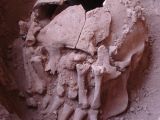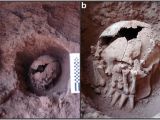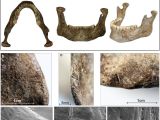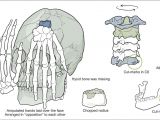A study published in the science journal PLOS ONE this past Wednesday, September 23, describes a ritualized decapitation that happened thousands of years ago in present day Brazil.
Lead researcher André Strauss with the Max Planck Institute for Evolutionary Anthropology in Germany and his collaborators documented this ritualized butchering that occurred in South America in ancient times after having come across a skull buried at an archaeological site called Lapa do Santo.
The skull, shown in the photo gallery below, was found under limestone slabs. When the research team came across it, it had two amputated hands covering the face, arranged opposite each other.
It was back in 2007 that archaeologist André Strauss and his colleagues discovered this millennia-old skull. The burial place from which it was recovered also produced a total of six cervical vertebrae and a jaw originating from the same individual as the cranium, the team detail in the report announcing the find.
The decapitation was likely a mortuary ritual
As mentioned, the human cranium, the jaw and the cervical vertebrae were all recovered from an archaeological site called Lapa do Santo. Having examined them using accelerator mass spectrometry, the research team concluded that they date back to around 9,000 years ago.
This is in accordance with previous archaeological evidence indicating that this region in east-central Brazil was inhabited by people since around 12,000 years back.
The chemical profile of the remains hints that they belong to a young man who lived in the area. The scientists think that the decapitation was not a case of trophy taking - in ancient times, people in South America would often keep the heads of enemies they killed as trophies - but rather a mortuary ritual of sorts.
“We suggest a ritualized decapitation instead of trophy-taking, testifying for the sophistication of mortuary rituals among hunter-gatherers in the Americas during the early Archaic period,” scientist André Strauss and fellow researchers write in the journal PLOS ONE.
“In the apparent absence of wealth goods or elaborated architecture, Lapa do Santo’s inhabitants seemed to use the human body to express their cosmological principles regarding death.”
Possibly the oldest decapitation in the New World
The cut marks visible on the jaw and on one of the cervical vertebrae prove the remains do in fact belong to somebody who was decapitated. Interestingly, archaeologist André Strauss and his colleagues think this might be the oldest case of decapitation so far documented in the New World.
If they are right, the find means the research community should probably reevaluate its stand on the history of beheadings in South America, as well as the geographic distribution of such practices.
Thus, André Strauss and his team say their discovery pushes the established timeline for decapitation practices in South America back around 4,500 years. It also indicates that decapitations were not confined to a few regions, but were instead widespread across the entire continent.
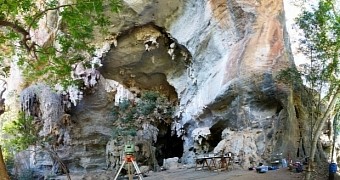
 14 DAY TRIAL //
14 DAY TRIAL // 
